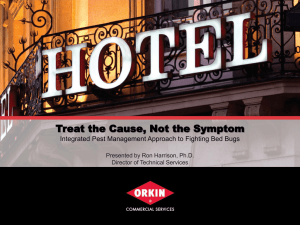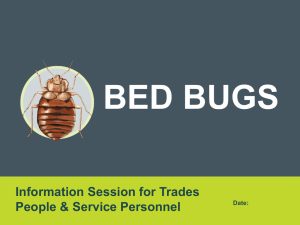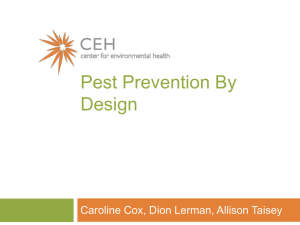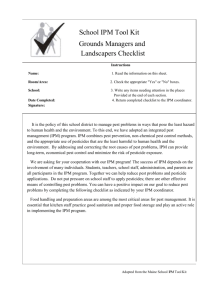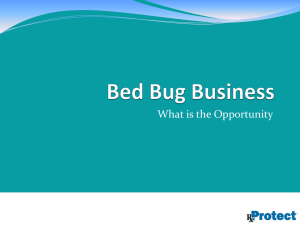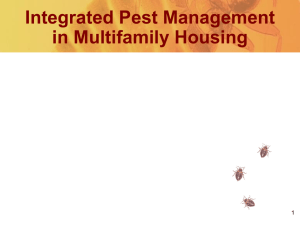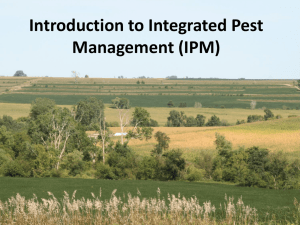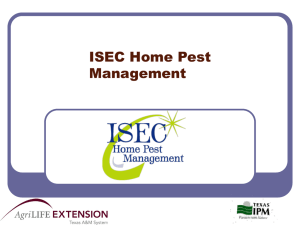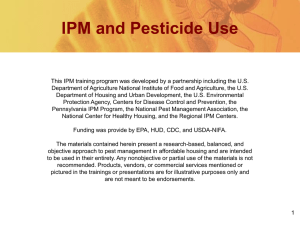Integrated Pest Management
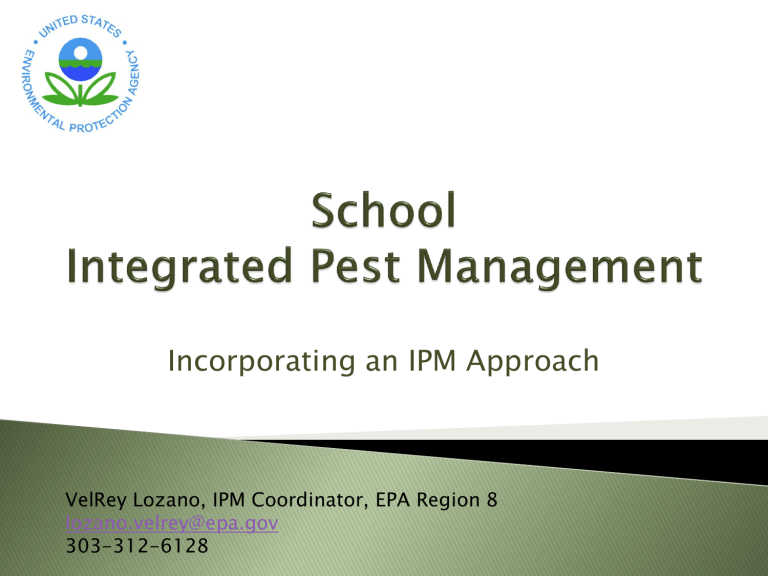
Incorporating an IPM Approach
VelRey Lozano, IPM Coordinator, EPA Region 8 lozano.velrey@epa.gov
303-312-6128
Common sense approach to managing pests and pest control
It ’ s a safer and more cost effective solution to pest control
Useful in all situations; schools, homes, working establishments
Children spend up to 80% of their time in schools.
IPM is important because it looks for the best way to manage pest problems with the least possible damage to the environment, people and even property.
IPM programs take advantage of all pest management strategies, including judicious careful use of pesticides when necessary.
Head lice
Bees/wasps
Rodents
Ants
Flies
Cockroaches
Termites
Weeds
Potentially bed bugs
70-93% use pesticide indoors, outdoor in-house, contract routine, calendar applications or as-needed applications
What is the pest?
Where is it coming from?
Why is it coming?
◦ Food
◦ Water
◦ Shelter
Visual inspections
Sticky traps
German Cockroach vs. Oriental Cockroach
Pharaoh Ant vs. Pavement Ant
European Paper Wasp vs. Yellow Jackets
Identification is necessary for deciding how you are going to manage your pest problem
Part of an IPM program is setting pest threshold levels or tolerance levels.
◦ Vectors
◦ Nuisance
Building repairs
◦ Installing door sweeps
◦ Screening
◦ Caulking
Cultural changes
◦ Using storage containers
◦ Trash handling
◦ Modifying food access
◦ Minimizing materials
Landscapes
◦ Mowing heights
◦ Watering regimen
◦ Fertilizer selection
◦ Rock and mulch barriers
◦ Plant selection and maintenance
Ask them how they treat pest problems.
◦ They need to identify the pest
Ask them about the products they use
◦ They should provide MSDS info on chemicals used
Don ’ t expect a PCO to ” do it all.
”
◦ Pest management in your school depends on all school staff
Depends on how you are measuring costs?
Short
Term
Long
Term
Effectiveness of program, safety in pesticide reduction, reduction in illness
Time, materials costs, routine monitoring
The future of School IPM
◦ 5 year plan to implement “ Verifiable ” School
Integrated Pest Management Programs
◦ EPA is developing national standards for IPM so understanding of the program expands and is consistent
◦ R8 – Support and expand the number of schools who are implementing “ verifiable IPM ”
Bleach - - Ammonia - - Acetone
VelRey Lozano, IPM Coordinator
EPA Region 8 (8P-P3T)
1595 Wynkoop Street
Denver, CO 80202-1129 lozano.velrey@epa.gov
303-312-6128
http://video.nationalgeographic.com/video/player/animals/bugsanimals/other-bugs/bedbugs.html
Education
How to identify bed bugs
Prevention
How to solve problem/What to do
A FEW BED BUG MYTHS
“ Only “ dirty people ” get bed bugs.
”
“ Bed bugs are only found in places like apartments where people are crowded together ”
“ Bed bugs are only a problem for low – income people.
”
Adult bed bugs are visible to the naked eye
They are brown and about ¼ – 3/8 ” long when full - grown.
In the nymph stages, bed bugs are whitish and smaller, but they are still often visible.
They don't fly, but they are adept crawlers, and they move FAST! –They scatter quickly if they ’ re disturbed
Your school needs to decide upon and develop a bed bug awareness program.
Providing identification information is the best info to provide.
The biggest issue with bed bugs in schools is ostracizing students if they are suspected of having bed bugs.
Prevention
Heat treatment
Steam treatment
Chemicals

